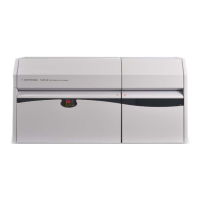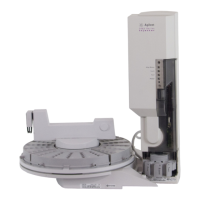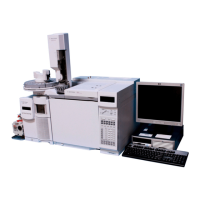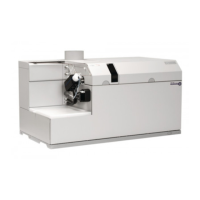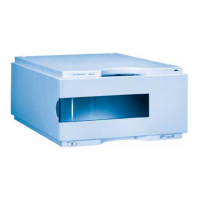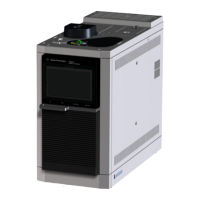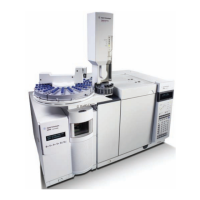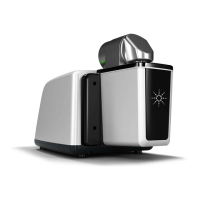Safety Practices and Hazards
Agilent 240/280 Series AA (including Zeeman) 21
Heat hazards
An open flame, burners, and other hot surfaces can present heat hazards that can
result in severe burns.
When operating a flame system, always operate your spectrometer with the flame
shield closed, and the sample compartment front panel in place. Keep your hands
out of the sample compartment while a flame is burning.
When operating a flame system make sure that the chimney is in place with the
cutaway skirt (if present) to the back. Before you touch the instrument chimney,
turn off the flame and allow the chimney to cool. The burner and flame
compartment become extremely hot during instrument operation and remain hot
for some time after the instrument has been switched off. Allow the burner and
flame compartment to cool before attempting to access the burner or sample
compartment components.
When you change burners, remember that the burner may be very hot. Always use
protective gloves when removing a burner from the instrument.
Perchloric acid
Aspiration of perchloric acid and perchlorates into a nitrous oxide-acetylene flame
can create an explosion hazard that can result in death or serious injury, including
temporary or permanent impairment of hearing.
Do not use perchloric acid unless it is absolutely essential for sample preparation.
If perchloric acid must be used, it may be possible to reduce the risk of explosion
by taking the following measures:
Use an air-acetylene flame instead of a nitrous oxide-acetylene flame.
Reduce the concentration of perchloric acid and metal in all analytical
solutions to the lowest practicable level. The concentration of perchloric acid
should be reduced in the digestion stage and further reduced by extending the
fuming stage.
Aspirate all solutions for the shortest practicable period.
Aspirate distilled water between samples. Minimize the aspiration of air.
Use separate spray chamber/liquid trap and drain assemblies for perchloric
acid analyses and organic solvent analyses to prevent perchloric acid from
mixing with organic solvent residues.
